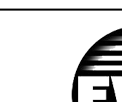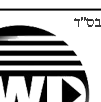|
Since carbohydrate is the main food component balanced against insulin, it is important to know exactly how much carbohydrate a portion of food contains. One way of figuring this is by using the "carb factor". The carb factor is the percentage of carbohydrate present in a food. For instance, the carb factor of an apple is 0.13. This means that 13% of an apple's weight is carbohydrate. An apple weighing exactly 100 grams would contain 13 grams of carbs. If an individual uses one unit of Humalog to cover 13 grams of carbohydrate, he would administer one unit of Humalog to cover this part of the meal.
A complete list of over 300 carb factors for various foods is available in any of these books from John Walsh: "Pumping Insulin", "Stop the Rollercoaster", and "The Pocket Pancreas". To buy the books, click here.
For an article explaining carb factors (by John Walsh) go to http://
www.diabetesnet.com/diabetes_food_diet/carb_counting.php
#Count and scroll to option 3, With A Scale.
Here is a link to a site that lists the nutrition facts of food items per serving of 100 grams, which can be used as carb factors. (Israeli foods usually list nutrition facts in this manner.) http://www.medexplorer.com/nutrition/nutrition.dbm
Keep in mind that this site, recommended to me by John Walsh, does not list the fiber contents of the foods. (The fiber content of a food is subtracted from its total carb content. Therefore, a food that contains a lot of fiber might have less actual carbs than listed.)
(The site also provides an option to search for foods that are high or low in specific nutrients. For example, you can isolate foods that are high in Folate or low in carbohydrates.)
Just remember to add a decimal before the number listed under "carbohydrate content", to turn it into a usable carb factor. We have already explained this in our Tu B'Shevat article.
To look up food nutrition values, including fiber counts, go to
http://www.nal.usda.gov/fnic/cgi-bin/nut_search.pl. Type in the food you are looking for, and then check for 100-gram servings to get the carb factor. (Don't forget to add the decimal point.)
For a complete list over 6,000 foods and their carb factors (in MS Excel) click
here.
For a convenient, pocket-sized list of carb factors, print out this
Microsoft Word Document. Cut to size, and laminate it. Take it with you wherever you eat.
For a guide on calculating carb factors for homemade recipes, click
here.
The carb factor for ALL soft, baked products is .50 (This includes Challah, bread, rolls, and even cakes, it doesn't matter if it has sugar or not), which means that half its weight is carb. (This generalization is not absolutely accurate, but we feel that it's very easy to remember the estimated rule of "half the weight" for any soft, baked food.)
A note about using carb factor for Pasta
Because the weight of pasta can vary a lot based on the water content and the amount of time cooked, volume measurement (with measuring cups) will generally give you a more accurate carb count, than using a carb factor.
From Michael Robinton, Executive Director, Insulin Pumpers
|










